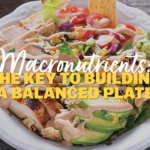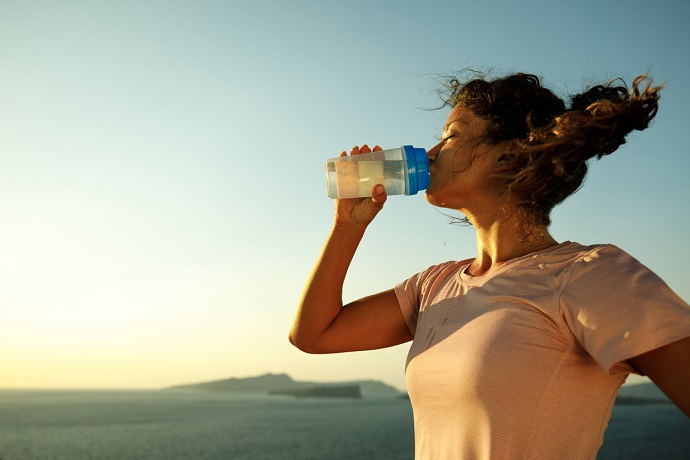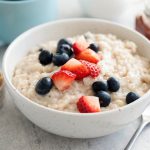Water is essential for survival. Your body is around 60% water, so staying well hydrated keeps things functioning properly. Hydration is even more important when you’re physically active. It regulates body temperature, aids recovery, minimizes cramping, and enhances focus. While staying hydrated is important for all of us, competitive athletes and recreational exercisers can optimize their performance when they prioritize hydration.
Hydration goes beyond taking a water bottle along with you to your workout. It should begin well before activity so that your body isn’t dehydrated from the start. Although fluid needs are very individualized, 2 cups (16 fluid ounces) consumed two to four hours prior to activity is ideal for many people. If you wait until you feel thirsty, chances are you’re already dehydrated. To stay hydrated during exercise, drink two or three large gulps (around 4 fluid ounces) every 15 to 20 minutes.
Water is sufficient for activity lasting less than one hour. If you’ll be exercising for more than one hour or at a high intensity, temperature, humidity, or altitude, consider a sports drink. This will help the body rehydrate more effectively by replacing carbohydrates and electrolytes lost in sweat.
When choosing a sports drink, select a flavor you enjoy so you’ll be more likely to drink it while exercising. Look for a beverage that contains 12 to 18 grams of carbohydrates and 110 to 170 milligrams of sodium per 8 fluid ounces. Some brands add vitamins, herbal supplements, like ginseng and guarana, and even caffeine. However, there’s no substantial research to support their benefits for performance. SAGE’s Registered Dietitians developed our house-made sports drinks with simple ingredients based on current sports nutrition recommendations. They provide an ideal blend of carbohydrates and sodium for rehydration.
There are other ways to hydrate other than drinking out of a glass or bottle. Fruits like watermelon, cantaloupe, oranges, and strawberries contain high water content and help replace electrolytes lost through sweat. Hydrating vegetables, including cucumber, bell pepper, lettuce, and zucchini, can be incorporated into meals and snacks. Even adding a bowl of a broth-based soup to lunch or dinner increases your overall fluid intake.
Resuming usual eating and drinking habits after activity is suitable for most people’s rehydration and recovery. Guests can follow SAGE’s Performance Spotlight® guidance, designed specifically for active individuals, to build meals that fuel training and competition needs. To find Performance picks, look for the runner icon on the online menu, in the Touch of SAGE® Mobile App, or on signs in the dining hall.






